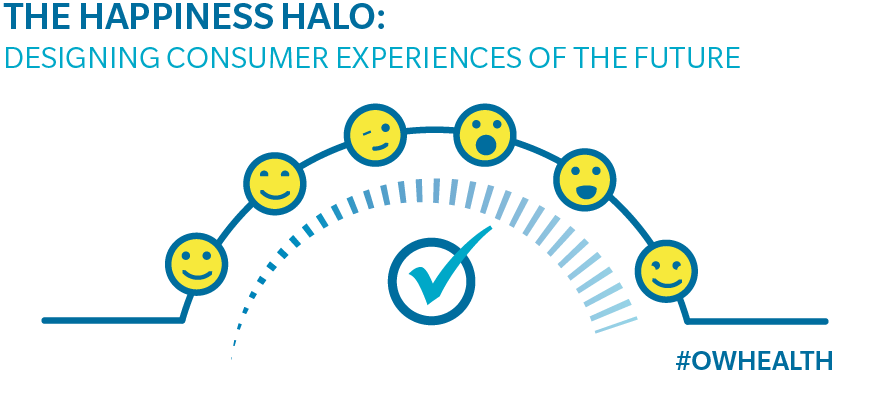There’s something different happening in healthcare vis-à-vis consumers. Net promoter scores (NPS), a measure of customer satisfaction and loyalty, are typically much lower for the healthcare industry than those of other industries. This is not entirely surprising. When you compare your average experience with a payer or provider to that of a luxury hotel, you would expect to see lower NPS scores.
But we’ve observed a trend emerging in the last few years. We are seeing healthcare companies with NPS well above industry average. And I’m not talking about Mayo Clinic or the Cleveland Clinic, whose consumers rate them very highly and have for years. I’m talking about companies who play across the value chain in healthcare – care delivery, insurance, concierges, navigators, etc. These are companies who are thinking in a more consumer-centric way and putting their consumers’ healthcare journey – whether chosen or unchosen – at the heart of their design. Companies like ZocDoc, CityMD, and Quantum are reporting very high NPS scores relative to the industry average, in part by building emotional connections.
The value of emotional connection
These emotional experiences matter a great deal. Recent research with our sister firm Lippincott’s clients has shown just how much. We determined through regression analysis that 75 percent of one’s overall perception of a brand comes from the experience, and 25 percent comes from the communications, brand story, and the like. To become an emotionally powerful brand, we need to design emotionally powerful experiences.
That emotional connection is worth it: Our data shows that if you can form an emotional connection with a customer, they’ll book an extra night per year in your hotel. They’ll take almost 40 percent more trips to your store. They’ll deposit an extra $7,000 into the bank account with you. In many industries, emotionally connected customers have double the value.
How to stretch the definition of experience
We’ve seen companies like Starbucks and Tiffany’s drive emotional connections with their consumers. But it’s not just diamonds that deliver emotionally connected customers (though I am very emotionally connected to mine). We’ve also seen this dynamic play out in industries that are real chores for their customers – business travel, grocery shopping. And we’ve seen players in these industries take a mundane experience and create something that people really look forward to, and look back upon fondly.
Emotionally strong brands stretch the definition of experience. They create anticipation and build excitement leading up to the experience, and they create an afterglow of memories of the experience. And in so doing, they make a happiness halo.
Happiness researchers find that more than half of someone’s happiness is driven by moments of anticipation and remembering. Happiness, it seems, is as much about how we look forward to and look back upon an event as it is about the event itself. (The happiness halo.)
That means brands that focus on in-the-moment interactions are missing opportunities to build emotional connections, and they are ignoring the before and after moments when engagement might be more exciting and compelling for consumers. To make customers happy, brands must tap into the joy of anticipating an experience and the warmth of remembering it.
Creating anticipation, building excitement
Take anticipation: Where happiness is concerned, anticipation isn’t only the appetizer; it’s a source of joy all on its own. Most consumers actually receive more pleasure during the anticipation phase of a purchase than the acquisition phase.
Consider how Equinox, an elite fitness club, generated happiness by building incredible anticipation. To attract members, Equinox created a new membership status, Gold Membership. A Gold Membership comes with 24 personal training sessions, 12 private pilates sessions, one massage per month, $1500 in gift cards, complimentary Kiehl’s products, and many other perks. The catch: These memberships can’t be bought. They have to be found, treasure-hunt style.
Equinox “dropped” Gold Memberships around New York in the form of gold cards. The gold cards were not easy to find, as people had to jump, dive or climb to find them in five different challenges. At Fort Pond Bay in Long Island, people dove 20 feet into the bay in search of the gold card.
The hundreds of Equinox hopeful jumping, diving, climbing, and striving toward a Gold Membership added to the perceived value of being a member of the Equinox elite, and the anticipation of membership brought as much happiness as the membership itself.
Creating afterglow
Now, on to what we term the afterglow. Whether a person looks back on an experience positively or negatively will be the deciding factor as to whether they return, But our memories aren’t movie clips stored on a hard drive, they are nerve pathways that fire anew (and rewire) each time we remember the event. This means that certain moments disproportionately dominate memory. Brands need to recognize the power of memories and devote overt attention to getting memories on their side.
The interaction may have been amazing, but those last moments (being bounced out of the hotel) can dominate your memory and, from a decision-making perspective, basically wipe out the good interaction. So how do we get those memories on our side? End strong.
Black Tomato, a luxury travel booking service, focuses on ending strong. When travelers return home from a Black Tomato experience, the company gives them credit for a laundry service and takeout. (Acknowledging two of the biggest hassles travelers face after a trip: piles of dirty laundry and no food in the fridge) The fact that the brand is thinking about the return-trip headache leaves a lasting, positive impression in customers’ minds.
How healthcare can create a happiness halo
Healthcare is not a fitness club or travel booking service, but every healthcare organization has an opportunity to create anticipation and afterglow. It means considering the consumer experience end-to-end, not just the point of care or the moment of enrollment. And it means designing for happiness at every step.


